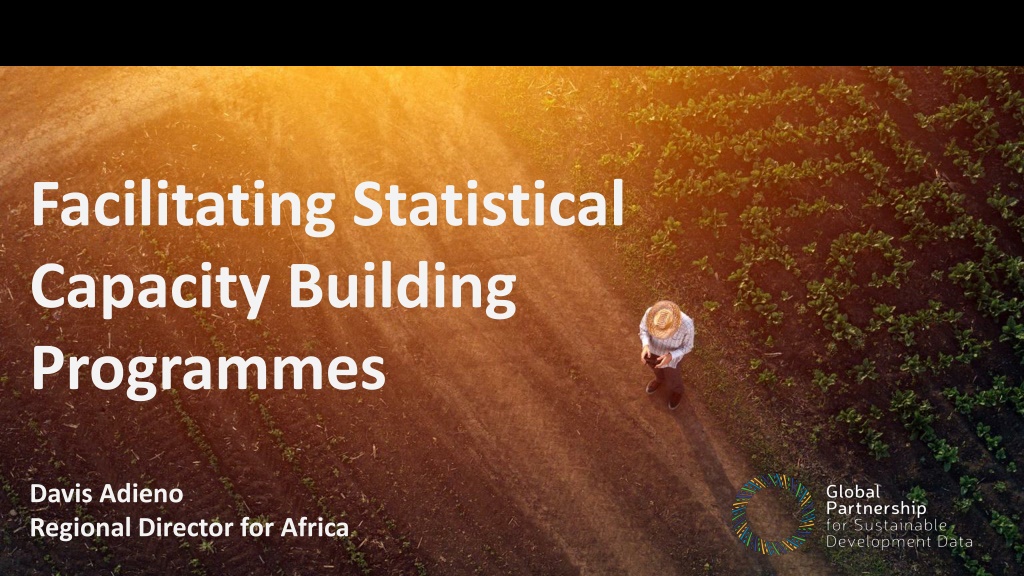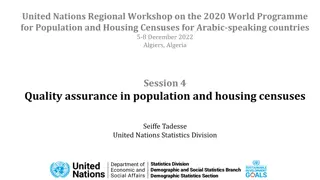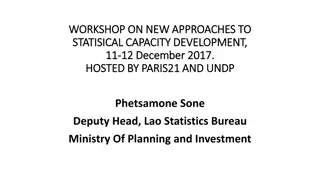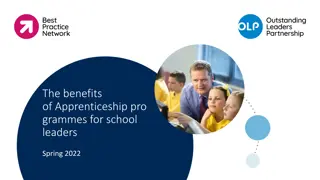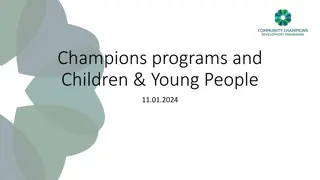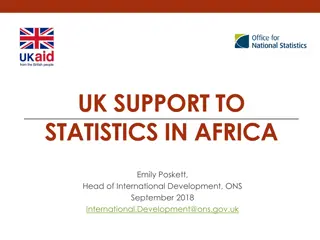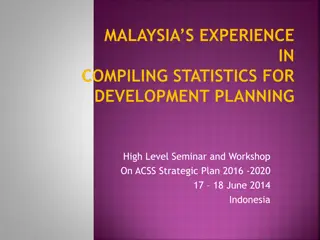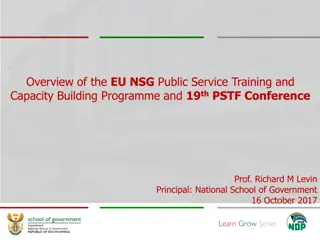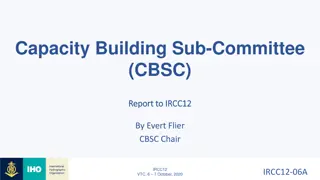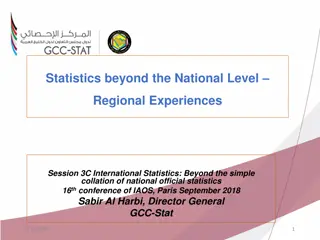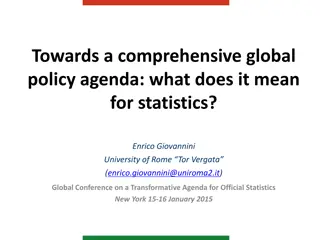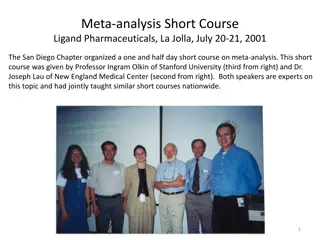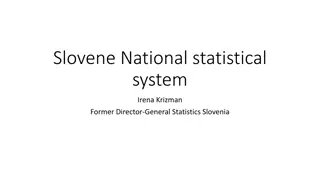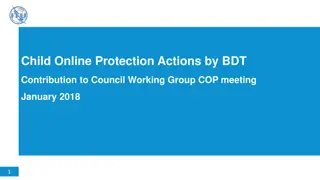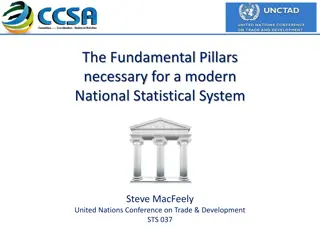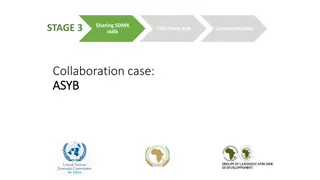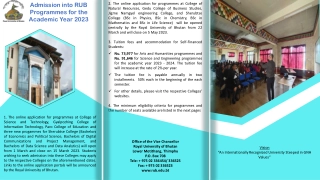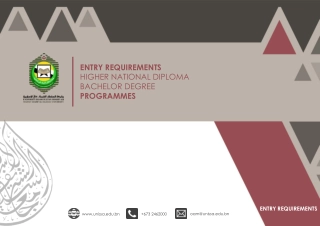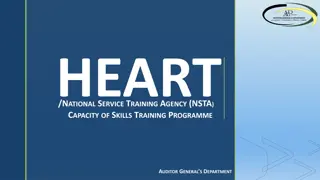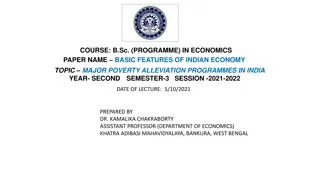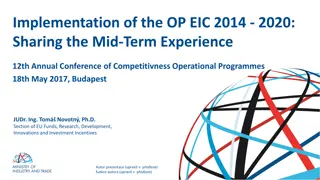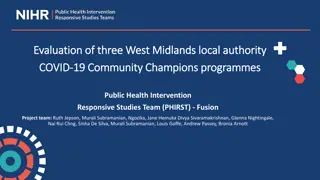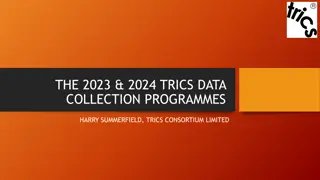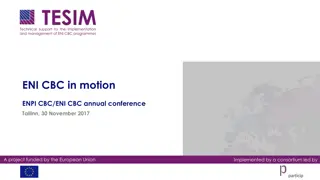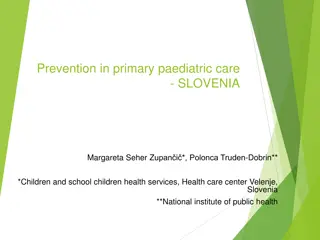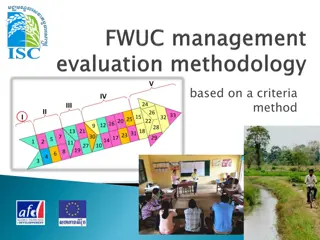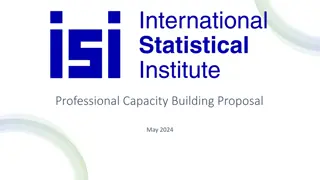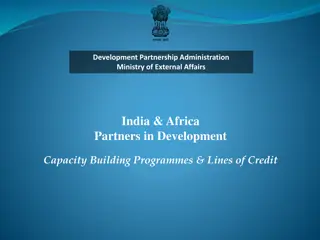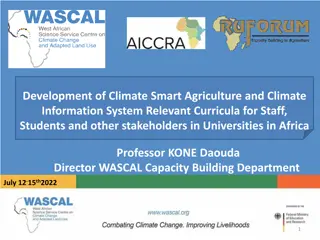Facilitating Statistical Capacity Building Programmes in Africa
The Global Partnership for Sustainable Development Data (GPSDD) aims to leverage data and technology to support the achievement of the Sustainable Development Goals. Through initiatives like the Africa Regional Data Cube, analytically ready satellite data is made accessible for geospatial analysis in priority thematic sectors. The partnership focuses on harnessing the data revolution to enhance capacity-building, innovate data production, and support the delivery of development goals in Africa.
Download Presentation

Please find below an Image/Link to download the presentation.
The content on the website is provided AS IS for your information and personal use only. It may not be sold, licensed, or shared on other websites without obtaining consent from the author. Download presentation by click this link. If you encounter any issues during the download, it is possible that the publisher has removed the file from their server.
E N D
Presentation Transcript
Facilitating Statistical Capacity Building Programmes Davis Adieno Regional Director for Africa
About the GPSDD The Global Partnership for Sustainable Development Data (GPSDD) is a multi-stakeholder partnership consisting organizations across sectors focused on leveraging data and technology to support achievement against the Sustainable Development Goals (SDGs) and other regional and national development frameworks. Within the context of the data revolution, the GPSDD is working to develop an ecosystem approach where governments, private sector and civil society are working together to achieve the SDGs inclusive of the political, technical, institutional and capacity and resource issues. GPSDD was launched during the United Nations General Assembly in September, 2015 to support countries around the world and stakeholders across sectors to better harness the data revolution to achieve the SDGs. of over 330-member
Harnessing the Data Revolution Harnessing the Data Revolution Supporting and complementing government and civil society efforts to generate data for statistics for the formal SDG monitoring framework Unleashing innovation in production, accessibility and use of real-time, dynamic, disaggregated data from multiple sources
Analytically ready Satellite data across decades to support delivery of Sustainable Development in Africa
Africa Regional Data Cube The data cube provides analytically ready data across decades allowing for easily accessible geospatial analysis on priority thematic sectors. Initial focus for the data cube will be on algorithms to address priorities identified by GPSDD partners across 5 countries: Ghana | Kenya | Senegal l Sierra Leone | Tanzania Kenya Government
Breaking New Barriers A regional, demand-driven data solution Availing satellite data free and open source no licences Implementation is in the cloud with a wide-range of applications Facilitating data and analytics (algorithms)-sharing among users Increasing regional and global capacity to use satellite data Supporting the delivery of the SDGs & other development goals
African Regional Data Cube (ARDC) Operational Model Strathmore University (Host in Nairobi, Kenya) Amazon Web Services (AWS) Cloud (Simple Storage) S3 Data Storage (13 to 23 TB) Landsat 7/8 Sentinel-1 Sentinel-2 (year 2) Elastic Compute Cloud (EC2) Computing * Data Cube management, new data ingestion, web-based user interface * Managed by Strathmore University with support from NASA-SEO Kenya Each country has its own EC2 Computing instance for analysis purposes (User Interface and Jupyter Notebooks), but S3 data storage is shared among countries in the AWS cloud Sierra Leone Senegal Tanzania Ghana
Application Products Application Products 20+ algorithms & 17+ years of data Cloud-free Mosaics: Recent Pixel, Median, Geomedian, Max-NDVI Spectral Indices: NDVI, EVI, NDBI, NDSI, NDWI, FC, TCT Land Classification: K-Means, Random Forest, Snow (from Swiss) Water: WOFS (from Australia), WASARD (radar), Total Suspended Matter (TSM) Land Change: PyCCD (from USGS), PCA (from Colombia), NDVI Trend (Vogelmann), NDVI Anomaly, S1 Radar (Deutscher), Coastal Change, SLIP-Landslides (NASA GSFC)
ARDC timelines May Countries + Strathmore Training + Launch June - July Country engagement Buy-in + coordination Partnerships July - Sep Country use-cases Scope + development Fundraising Innovation Sharing Learning Online Forum Showcase products UNGA/WDF Sept - Oct Hiring GIS Technical Manager Oct - Dec Regional + In-country Products + users 2019 + Digital Earth Africa Scale-up model Strategies Operational Communications Country engagement
Deforestation and Settlements along the East Chenene Forest Reserve in Tanzania Africa Regional Data Cube Land Change 2012-2016 (orange and red) The PyCCD Land Change Algorithm (orange/red bottom figure) compares well with the Global Forest Watch results (pink top figure) for deforestation detection
Urbanization in Freetown, Sierra Leone Year 2017 Year 2000 Urban extent has grown 11.4% over 10 years * Analyses based on the NDBI index using the Africa Regional Data Cube
Illegal Mining on the Ankobra River in Ghana Year 2017 Google Earth 2017 Year 2000 A Fractional Cover (FC) analysis (GREEN images) showed a 13% loss in dense vegetation along the river & when it started A Google Earth image in 2017 (far right) shows the known locations of illegal mining, provided by the Ghana Government Pin-pointing potential hotspots to warrant further investigations saves both time and money - and enhances efficiency
Selected initiatives Innovation fund - make funding available for collaborative data innovation projects across the World, including Africa. Supported by the World Bank s Trust Fund for Statistical Capacity Building (TFSCB) with financing from DFID, Korea Government, & Department of Foreign Affairs and Trade Ireland In partnership with ECA we are building the economic case for CRVS - be on the look out for this interesting initiative We are working closely with UNSD, Open Data Watch and other partners to develop interoperability guidelines that will that will soon be published and made available to you all. This will be a practitioner s guide to joining up data in the development sector Inclusive Data Charter (IDC). Objective of the charter is to mobilize political support to improve the quality, quantity, financing, and availability of inclusive and disaggregated data as well as the capacity and capability to produce and use it
www.data4sdgs.org www.data4sdgs.org Contact: Davis Adieno Email: dadieno@data4sdgs.org
Learning The infrastructure, data, and tools are great, but; leadership, coordination mechanisms, country buy-in and ownership are critical Significant and sustained capacity development is needed to impart skills EO and satellite data are great but depending on what you have available it may not be applicable across the board define what s useful for the type of data you have Combining satellite data and other data sources yields optimum results It takes time, you need patience and resources. More sustained training is needed to impart skills especially face-face It can t work without solid partnerships with National Statistical Offices (NSOs), National Space Agencies, key Ministries and government agencies Demand exists. Other data communities are needed to foster innovation and effectively respond to demand
Progress National coordinating mechanisms established in 4 out of 5 countries Recent web-based remote training for Ghana (July 31), Tanzania (August 16), and Sierra Leone (Aug 24). More training planned for late 2018 Enhancements to the infrastructure based on user experience Initial support has been focused on algorithms to support desired use-cases in: Kenya: Dadaab Refugee Camp expansion, deforestation and vegetation extent, livestock rangelands Tanzania: Chenene Forest Reserve deforestation and agriculture phenology Ghana: Illegal mining (on right) Sierra Leone: Flooding and urbanization (below)
